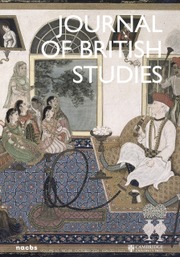Richard Boyle, first earl of Cork, has long been considered the “model planter” of early modern Irish history. He amassed a considerable fortune and vast estates in the first half of the seventeenth century, and after his death in 1643 left behind a dynasty, with his numerous offspring married both into Irish and English prominent families. This new collection of essays, edited by David Edwards and Colin Rynne, sets out to probe this image more deeply. How much of the ideal colonist was careful self-presentation, even manipulation? What did Boyle's “colonialism” actually look like on the ground? These are the central questions motivating this fine collection of essays.
The volume, composed of four major sections and thirteen chapters, arose from the “Colonial Landscapes of Richard Boyle” project, funded by the Irish Research Council. While a monograph on Boyle's estates is forthcoming from the project, this volume is drawn from a 2013 conference. The project's contributors aimed to “recreate Boyle's Munster estate and chart its evolution” (16) and delved into the extensive Boyle archive, both in Dublin and at Chatsworth House, in unprecedented depth. The volume's essays are enhanced by this rich seam of archival material, some of it relatively unknown despite Boyle's prominence. The four main sections of the book address Boyle's estate in a wider British and Atlantic colonial context; the estate as “physical theatre” (18) for displays of Boyle's considerable wealth; the social environment on the estate, including relations with the native Irish; the military affairs of Boyle and the estate itself.
The extensive archival finds and deep research enabled by them are much on display in the first section. In her chapter on Boyle as colonial “shapeshifter” (27), Audrey Horning masterfully delves into the mixed religious and ethnic environment of seventeenth-century Munster. She shows Boyle's willingness to engage with older Gaelic traditions and structures in a bid for legitimacy and the “normalisation” (40) of the planters. Horning shows Boyle's typicality in this in the wider Atlantic context, which not only borrowed from native traditions because of display and self-promotion but also at times for bare survival. Likewise, David Heffernan's study is a careful examination of how Boyle measured up as the “ideal planter,” as envisioned by the Articles for Plantation for the province, versus the reality. The result is a nuanced investigation of important issues such as Gaelic plantation tenants, urban development, and the military duties of planters as conceived by Boyle. The main thrust of all of the section's chapters is perhaps best captured by Heffernan, who describes “economy and wealth creation” (63) as the driving forces behind Boyle's activities.
The second section dives into Boyle's estates as physical theatre. In a series of chapters, co-editor Colin Rynne, Paul Rondelez, James Lyttleton, and Jane Fenlon each address this broad issue, and turn up unexpected gems of interest. This could be said to literally be the case with Fenlon's chapter on the “material world” of Boyle, especially his spending on luxury goods such as clothing and jewelry, which will undoubtedly prove of great interest to historians of clothing and material culture in a British context. Rynne's contribution describes Boyle the bridge builder, partially driven by the need for “civilising the commonwealth” (98), but also through bitter experience, such as when his coach overturned in the icy river Nire in December 1634. Lyttleton's chapter likewise gives us Boyle the builder, with the earl an active patron of architecture, interlinking his family's advancement and status with wider “agenda of civil and religious reform” in Ireland (136).
The third and fourth sections deal alternately with Boyle's social worlds, and with his military engagements and duties as one of Ireland's foremost colonists. David Edwards's exploration of Boyle's early Munster connections, especially through his first wife, Joan Apsley, is eye-opening, especially the extent of contact and interaction with the Gaelic world, a theme also at the heart of Kenneth Nicholls's piece. There are surprising discoveries in Edwards’ third chapter as well, especially the significant contribution made by the native Irish to Boyle's military strategies in Munster prior to 1641. Clodagh Tait's elegant examination of women's lives and work on the Cork estates is both careful archival sleuthing and a demonstration that even seemingly “unpromising” sources can shed light on women's lives, a topic still sorely underexplored in early modern Irish historiography. Patrick Little rounds out the volume on a sober note, reminding us that when the 1641 rebellion broke out, it seemed that Boyle's star was not only on the descent, but at risk of being sucked into a black hole of destruction and conflict: his son and son-in-law were both killed in 1642, and the great earl himself died in 1643. While not recounted in this volume, a significant amount of time would pass before the family found themselves anywhere near their former position.
The rich essays described above together form a fine volume. There is much to excite historians of early modern Ireland and the Atlantic world and insights for those interested in material culture, agriculture, industry, and more. Some consideration of new perspectives—for example, research in environmental history such as that currently being undertaken by Keith Pluymers comparing Irish and American and Caribbean plantations—would have added even further depth and nuance. With the Boyle papers as the foundation for the volume, it is perhaps to be expected that many chapters overlap, with some repetition in places. There is occasionally an overconcentration on Boyle's land and commercial activities, even in contributions ostensibly focused on more social and cultural aspects of his colonial world. However, this volume represents only the start of much work to come on Boyle, enabled through the work of the Irish Research Council project team. It should therefore be seen as a stimulating opening statement rather than a final address.

